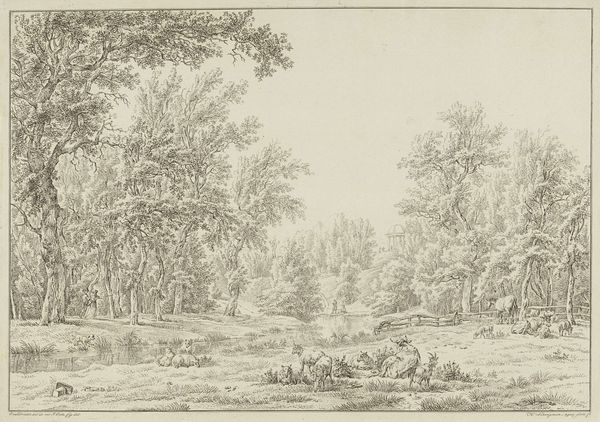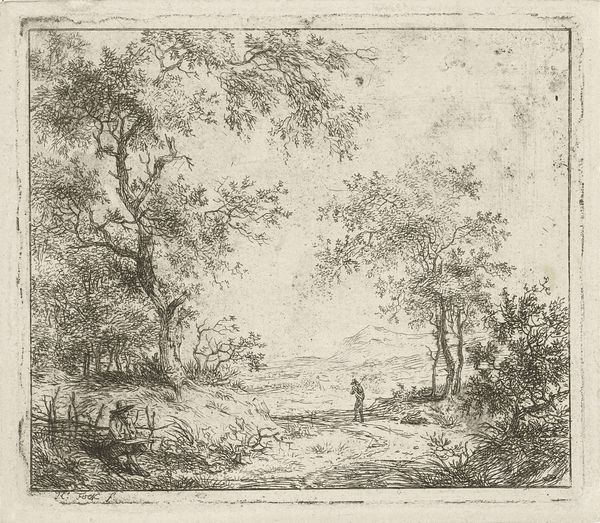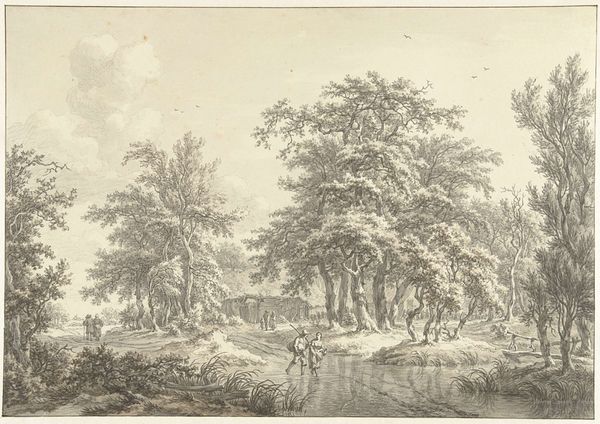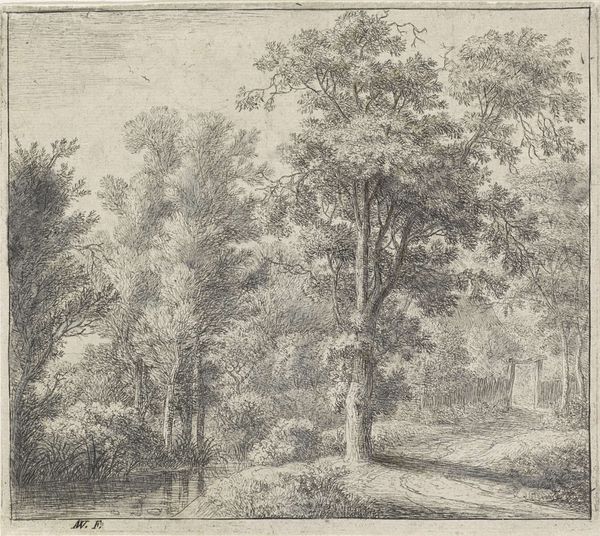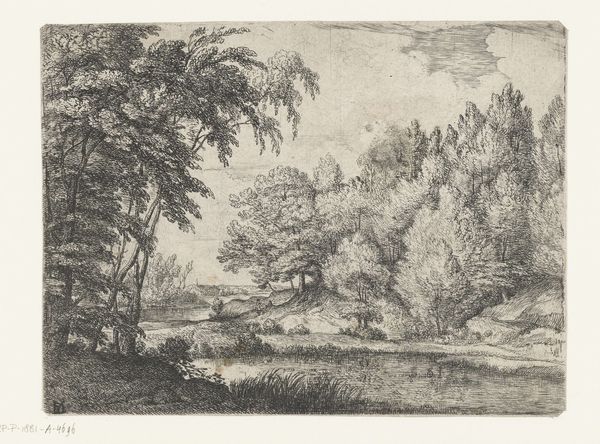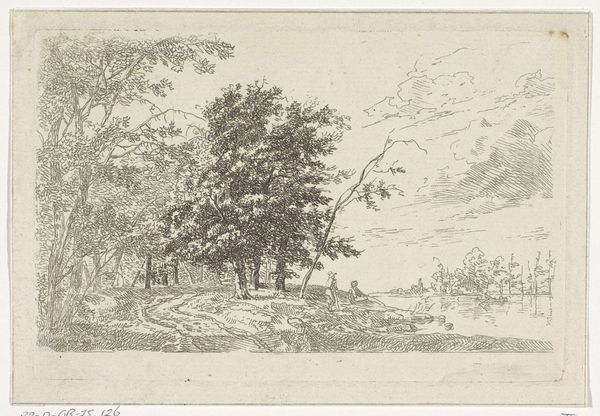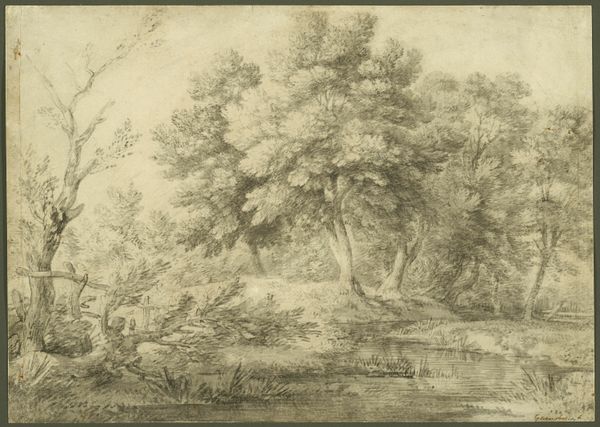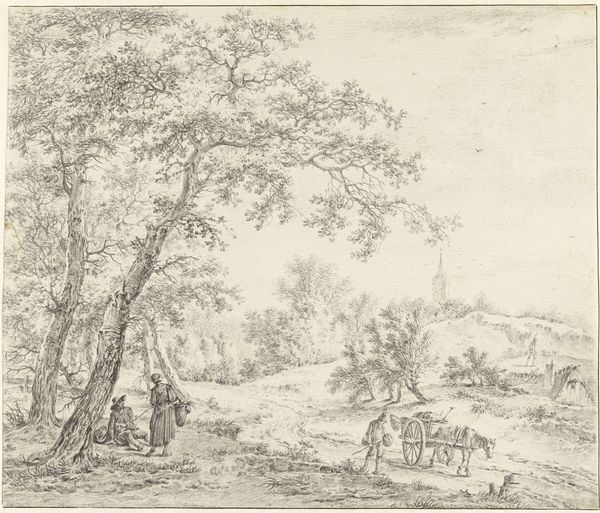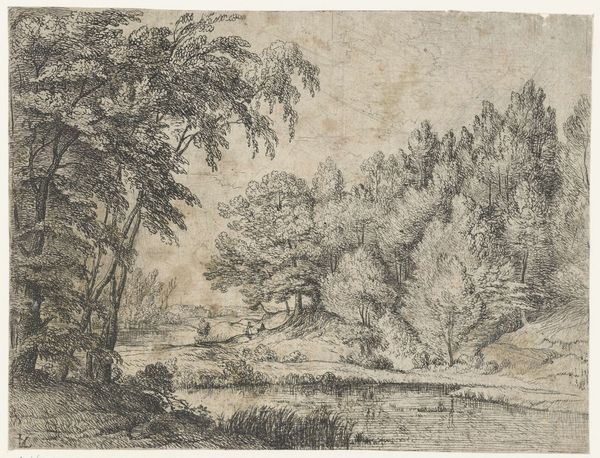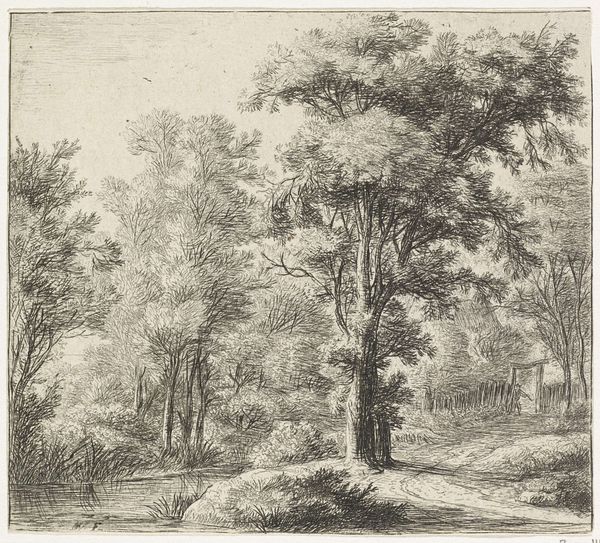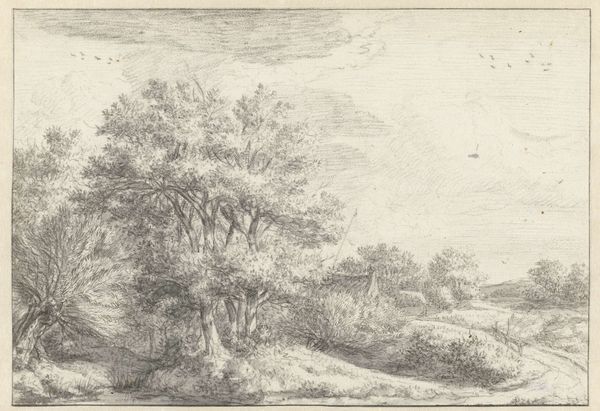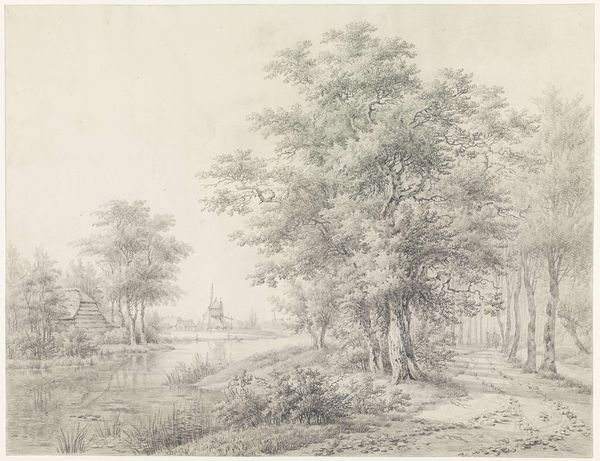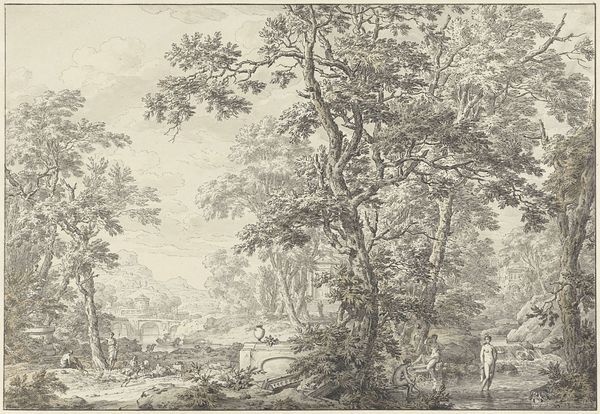
drawing, print, etching
#
drawing
# print
#
etching
#
landscape
#
etching
#
figuration
#
romanticism
#
cityscape
Dimensions: height 385 mm, width 550 mm
Copyright: Rijks Museum: Open Domain
Editor: So, this is "Gezicht op buitenplaats Elswout bij Overveen," a landscape etching by Hendrik Schwegman, dating back to 1796. There's a really tranquil mood to it, almost like a staged scene, wouldn’t you say? What historical context can you bring to this piece? Curator: Absolutely. The staged quality speaks volumes about the period. The late 18th century saw a rise in the appreciation of the picturesque, influencing how landscapes were both perceived and depicted. Etchings like this, as reproducible images, played a crucial role in disseminating that taste, practically setting the stage for ideal comportment and leisure for those with means. Notice how the estate house, though present, is not the focal point? What is foregrounded instead? Editor: I see, the focus is more on this idea of an idyllic scene—a man fishing with his dog, people boating. So, not so much about the individual property but more about conveying a sense of cultivated leisure, like accessible luxury, right? Curator: Precisely. And it begs the question: Who was this image made for? Consider the market for prints at the time. It's less about documentary accuracy and more about constructing an image of social harmony and perhaps subtly reinforcing a certain social order. This seemingly innocent landscape is laden with ideological meaning, presented through a deliberately charming visual language. Do you think the print format contributes to the impact? Editor: Yes, I think so. Being a print, it could circulate more widely than a painting, shaping public perception and reinforcing those ideas across a larger audience. The accessibility afforded to these concepts changes with distribution formats. Curator: Exactly. The power of art lies not just in its aesthetic qualities but also in how it actively shapes social values. Editor: That’s something I’ll definitely consider in my studies! Thanks. Curator: My pleasure. Considering the print medium does indeed show us a path to analyze how meaning spreads and solidifies among society.
Comments
No comments
Be the first to comment and join the conversation on the ultimate creative platform.
